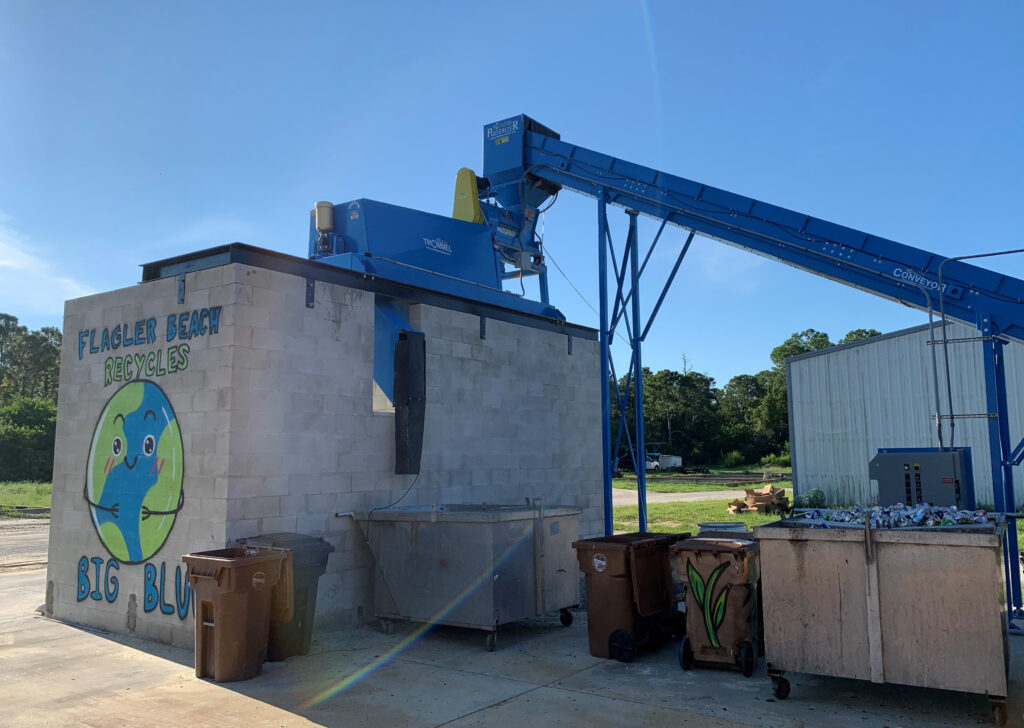Ecotourism Flourishes Along the First Coast

First, let’s start with the definition. The International Ecotourism Society defines ecotourism as “responsible travel to natural areas that conserves the environment, sustains the well-being of the local people and involves interpretation and education.”

There’s been a lot of talk about “responsible travel” lately and the carbon footprint one leaves when flying across the country or to a different continent. One alternative is to drive to nearby states or counties, and while the vast areas of wilderness found in the Everglades or the Gates of Arctic National Park aren’t available in Northeast Florida, those traveling to the area (or enjoying a staycation) can easily add some form of ecotourism to their itinerary. As a result, area businesses and communities are developing ways to enhance and promote opportunities for ecotourism. Some efforts go beyond marketing as localities and entrepreneurs focus on establishing sustainable practices for tourism and development.

Flagler County
Amy Lukasik, Tourism Development Director of Flagler County, is a strong proponent of the natural beauty of the area. “Mother Nature is our main attraction. Our neighbors to the north and the south have more name recognition as tourist centers. The good side of not being as well-known is that a lot of our natural resources are tourism assets. In Flagler County, we have a lot of natural green spaces and three state parks.”
Amy remarked that Flagler County’s one attraction, Marineland Dolphin Adventure, also does “a significant amount of conservation and education.” According to its website, Marineland offers educational opportunities and outreach for both children and adults and considers it its mission “to bring marine science and conservation messaging to the community.”

Flagler County
Amy also pointed out that the Whitney Lab was located just across the street from Marineland Dolphin Adventure. The Whitney Laboratory for Marine Bioscience is a full-time University of Florida research center for biomedical research and biotechnology. While they aren’t focused on tourism, Whitney Lab has a self-guided walking tour of their grounds and guided tours of their research facility, as well as behind-the-scenes tours of the Sea Turtle Hospital. Those who like to combine their trip with education and discussion may enjoy the free second-Thursday lecture series at Whitney Lab. Upcoming topics for the rest of 2022 include a lecture about killer snails and one about the plight of honeybees. (One assumes that the first has no impact on the latter.)
When asked whether tourists were looking for ecotourism when they traveled, Amy replied, “I think they are — and sometimes they are just happy to get out and see the natural landscape and beautiful scenery.” There’s no doubt that beautiful scenery, ecotourism, education and adventure can be found on beach walks, kayak trips and trails in the various state and local parks in Flagler and St. Johns Counties. In fact, one of the notable ecotourism locations in the area offers all of those experiences in both counties. The Guana Tolomato Matanzas National Estuarine Research Reserve is one of only 30 national estuarine research reserves in the United States. Known locally and familiarly as “GTM,” this reserve covers more than 76,000 acres starting south of Ponte Vedra, skipping the city of St. Augustine and continuing south along the Matanzas River.
GTM is named for the three rivers that create this estuary, the Guana, the Tolomato and the Matanzas.
These rivers and the surrounding marshland form this estuarine reserve where tourists and locals can find a breathtaking variety of wildlife. According to information supplied by Patrician Price, regional communication coordinator of GTM, more than 230 bird species have been recorded at the GTM Research Reserve. The GTM waters contain both freshwater and saltwater fish and vast oyster beds, all of which are being studied by scientists at GTM and the Whitney Lab.
GTM’s visitor center can be found ten miles north of St. Augustine. There, visitors will find access to a beach, the estuary, trails and an information center that focuses on education, research and stewardship. When we visited GTM, we learned that large and healthy estuaries can prevent coastal flooding and that oyster beds will clean impurities from our waters. Tours, programs and kayak trips are available at GTM Research Reserve’s northern and southern locations.

While St. Johns County has certainly become famous for man-made attractions — many of them historic — the county also offers a wealth of parks and recreation areas where ecotourists and locals can find ways to enjoy the region’s natural environment. A growing number of entrepreneurs offer fun and educational day trips by providing ecotours on boats, sailboats, kayaks and paddleboards. Amy Lukasik mentioned Ripple Effect Eco Tours, which offers ecotours in Flagler and St. Johns Counties, partners with the Whitney Lab, Marineland Dolphin Adventure and GTM to offer naturalist-guided, low-impact tours.
In St. Augustine, one former St. Johns County naturalist has started the ecotour company, Earth Kinship, to offer an experience that encourages a stronger connection between the natural environment and those visiting it. AyoLane Halusky defines his mission as building a kinship with the earth. Like many of the naturalists in the region, AyoLane hopes to send visitors home with a new understanding of the environment. “I practice what I call ethical ecotourism,” said AyoLane. “There are 30 or 40 different places around these counties where folks can experience nature a bit of what it was like here 300 years ago.” Most of Earth Kinship’s tours take place 15 to 30 miles from St. Augustine, where participants can listen to nature and where they are often the only group experiencing that area.
“On many of my tours, I will ask everyone to just sit quietly, no paddling, no talking, just listening. After ten minutes of silence, the wildlife comes back for us to experience.” Both Amy and AyoLane expressed the hope that those experiencing and learning about the natural resources of this part of Florida will go home and change some of their habits. AyoLane suggested that as tourists learn about the waterways and what impacts them, some may go home and stop adding to the fertilizer runoff that causes toxic algae blooms. “It’s really about the experiences we have in nature and the wild,” he said.
Both Amy and AyoLane mentioned sustainable tourism as well as sustainable development. A section of AyoLane’s website, EarthKinship.us, invites local interested persons to join a discussion group that will form a steering committee whose mission will be “to create and define sustainable ecotourism in a way that reflects and serves the unique qualities and needs of St. Johns County.”
Flagler County will soon begin a year-long sustainability and stewardship plan. Said Amy, “One of the first communities to develop this type of plan was Sedona, Arizona. They felt the pushback from their residents, and they started a program to maintain harmony among tourists, residents and natural resources. This has become standard across the world.” According to the Institute for Sustainable Communities, a sustainable community, such as Sedona, Arizona, and Park City, Utah, focuses on four pillars: Leadership and Civic Engagement, Ecological Integrity, Economic Security and Social Wellbeing to plan and manage growth, development and the community’s natural resources.
And that brings us back to the definition of ecotourism and what it can mean for those who seek adventure and education in the natural world. At its best, ecotourism conserves the environment, sustains the wellbeing of the local people and provides education. As Amy said, “Our ultimate goal is that when people come here, they will have a better understanding and appreciation of the importance of protecting natural resources. We want them to leave feeling inspired and take what they have learned here to better their own community.”

Amy Lukasik has been effusive about sustainability practices in Flagler County. One project is the City of Flagler Beach’s recent glass crushing machine purchase.
Many Northeast Florida communities have found that there are fewer opportunities to recycle home wastes and that recycling centers will no longer take glass. Nicknamed “Big Blue,” this new machine crushes glass into sand or coarse gravel that has no sharp edges. Uses for the sand or gravel include fill for sandbags, decorative mulch for gardens and repurposing into new products. One local artist has taken the glass and made drink coasters with a turtle motif to promote programs that help the natural environment.
“Big Blue” is capable of recycling 12 tons of glass every week. The Glass Packaging Institute has stated that glass is 100% recyclable and that more than a ton of natural resources are saved for every ton of glass that is recycled.









